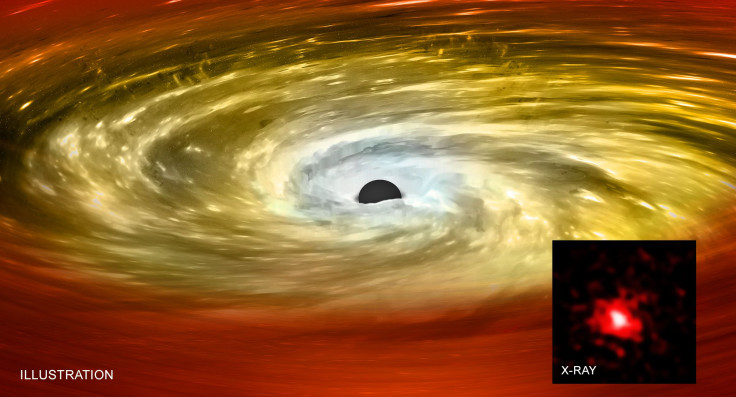Supermassive Black Holes In Unusual ‘Red Nugget’ Galaxies Kill Star Formation

A group of astronomers using NASA’s Chandra X-ray Observatory found supermassive black holes are extremely dominating when they are sitting at the center of an unusual type of galaxy called “red nugget.”
Nearly a decade ago, scientists using the space agency’s Hubble Space Telescope peered deep into the cosmos and identified the first red nuggets, which are ancient relics from the time when the universe was not even a billion years old.
Several astronomers studied their features and described these objects as the ancestors of today’s elliptical galaxies because they weighed just as much as the latter, despite being five times smaller in size. They posited most of these galaxies merged with their counterparts throughout the history of the universe, but some remained untouched.
Two such untouched galaxies are MRK 1216 and PGC 032673, located 295 million and 344 million light years from Earth – closer on the cosmic scale, especially when compared to other more distant red nuggets. A team using NASA’s Chandra telescope looked at the galactic duo in a bid to gain more insight into how they evolved during billions of years of isolation.
The researchers analyzed the hot X-ray emitting gas in the two galaxies and were able to witness the catastrophic effect generated by supermassive black holes sitting at their centers.
“These galaxies have existed for 13 billion years without ever interacting with another of its kind,” Norbert Werner, the lead author behind the study, said in a NASA statement. “We are finding that the black holes in these galaxies take over and the result is not good for new stars trying to form.”
When the researchers focused toward the center of MRK 1216, they observed a radio emission from the center and noted the region was much hotter than other parts of the galaxy. This, combined with other signs witnessed in the galactic center, indicated the black hole at the center had recently blasted out high-speed jets.
As astronomers had previously theorized the rapid blasts of jets from the central supermassive black hole can suppress the process of star-formation, the observation confirmed that theory indicating it is actually happening in the two red nuggets. The heat generated from this emission is so much that the gas in the other parts cannot cool down enough to support the birth of new stars.
But that’s not the only thing the researchers observed. The team discovered signs that suggest the black holes in the two galaxies may also have fed on the same hot gas. This means much of their mass — approximately five billion times that of the sun — probably accumulated from the gas itself.
“Not only do they prevent new stars from forming,” said co-author Massimo Gaspari, an Einstein fellow from Princeton University, “they may also take some of that galactic material and use it to feed themselves”.
“The Chandra data tell us more about what the long, solitary journey through cosmic time has been like for these red nugget galaxies,” co-author Rebecca Canning added in the statement. “Although the galaxies haven’t interacted with others, they’ve shown plenty of inner turmoil.”
The study titled, “Digging for red nuggets: discovery of hot halos surrounding massive, compact, relic galaxies,” was published in the journal Monthly Notices of the Royal Astronomical Society and the arXiv paper is available online.
© Copyright IBTimes 2025. All rights reserved.





















